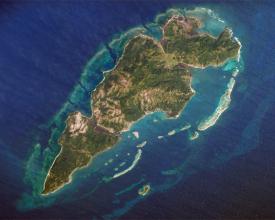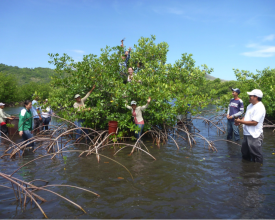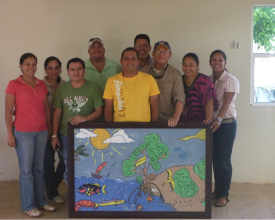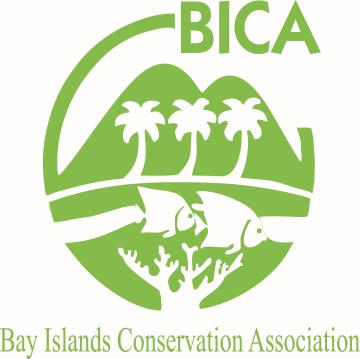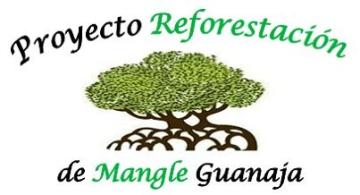
Guanaja Mangrove Restoration Project
Solution complète
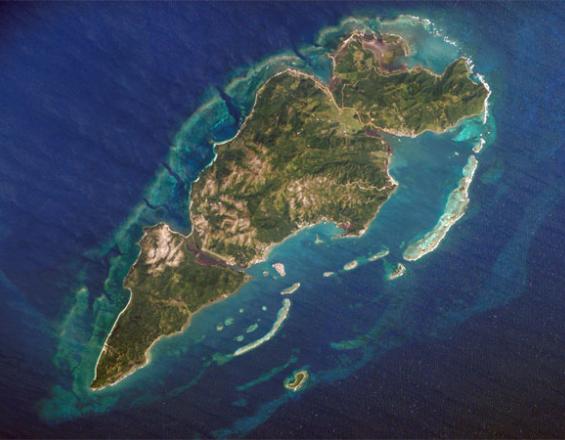
Guanaja Island satellite view (© BICA Guanaja)
The project is an initiative of the Bay Islands Conservation Association Guanaja (BICA Guanaja) and is a multi-year restoration effort to plant 400,000 mangroves to restore a self-sustaining healthy forest on Guanaja Island, Honduras. In 1998, Hurricane Mitch destroyed the mangrove forests, which supported fisheries and wildlife habitat and protected the perimeter coral reef from siltation. On-the-ground planting as well as monitoring and education ensure the long-term vitality of the mangroves.
Dernière modification 08 Feb 2023
9390 Vues
Contexte
Défis à relever
destructed mangrove forests, increasing coastal erosion and sedimentation of coral reefs
• The destruction of estimated 95% of the mangroves
• The lack of mangroves recovering naturally due to the geographic isolation from other mangroves and large percentage of mangroves destroyed
• Increased coastal erosion and high sedimentation of coral reefs in the Mesoamerican Barrier Reef region due to the decline in mangrove cover
• The absence of the once prominent artisanal fishing industry
Emplacement
Guanaja Island, Honduras
Central America
Traiter
Résumé du processus
Mangrove forests are highly valuable in Bay Islands for several reasons: they support local fisheries, provide habitats for diverse marine wildlife and protect the coral reef. The Guanaja Mangrove Restoration Project understands that on the ground planting is the most effective way to respond to mangrove depletion from Hurricane Mitch. However, the efforts of planting cannot be understood without daily monitoring of the progress both in the planting phase and the growing phase. Monitoring the survival of these mangroves can help to facilitate successful planting into the future. All of these efforts would be futile without the widespread awareness of the importance of mangroves to the local community. For this reason, the education of locals on the ecological benefits of mangrove restoration in both their livelihoods and their homes is equally as important as the planting.
On the ground work, close monitoring, and educating the importance of the work all function together to make our solution, mangrove restoration, an effective one. These blocks interact to 1) implement 2) monitor and 3) protect/support our solution.
Blocs de construction
On-the-ground Planting
Cultivation of mangrove propogules in outdoor nurseries.
Transplantation into degraded habitat.
Hand planting needed to be done due to the extent of destruction of the hurricane. The plants will not recover naturally fast enough to restore ecosystem benefits for local communicates. If the environmental and hydrological conditions remain suitable, mangroves can typically recover from storm damage. After Hurricane Mitch, however, the high percentage of mangroves destroyed, combined with geographic isolation from other mangrove areas, has resulted in very slow or no natural recovery. On-the-ground hand planting is the most effective way to help restore the ecological balance when mangroves cannot be restored naturally.
Facteurs favorables
The engagement of local volunteers.
Leçon apprise
The timing, season and location in which the mangroves are planted is very important. For example, we learned that mangroves must be planted at the right time to avoid fiddler crab larvae feeding on new leaves.
Ressources
Monitoring Growth and Success of Planted Mangroves
o Mangroves flourish more in some environments over others. The changing marine environment makes monitoring of red mangroves surviving from past plantings extremely valuable. Monitoring provides insight on the most successful intertidal zones, water depths, soil depths, and planting techniques. Monitoring of surviving mangroves ensures the survival of future planted mangroves.
Facteurs favorables
Founded in 2008, GMR is the only organized effort to restore the mangrove forests destroyed by Hurricane Mitch in 1998.
Leçon apprise
Through monitoring, we have learned the best times and sites to plant mangroves that will reduce mortality and enhance biodiversity.
Ressources
Education of Mangrove Importance to Local & Global Community
Until recently, mangroves were considered stagnant worthless swamps. Today, scientists and communities must work together to teach the importance of mangroves as critical components to the global environment. Over the past 25 years, almost 35% of remaining mangrove forests has been destroyed worldwide. Human activity has caused most of this destruction. It is imperative to educate communities about the importance of mangroves.
Facteurs favorables
The willingness of the community and school to learn more about their vital ecosystem and to join the project.
The ability to allow volunteers to assist hand-on with the planting of mangroves.
Leçon apprise
Education is extremely important in order to recruit more volunteers for planting.
Ressources
Impacts
• Ecological: Since 2008, over 100,000 mangroves have been planted with an additional 10,000 seedlings growing in two nurseries connected with local schools. Planted 38,000 red mangroves during 2013’s peak season. Maintaining 3 mangrove nurseries producing between 15,000 and 50,000 mangrove starts annually. Restoring 100 Hectares of dead mangrove forest lands at a rate of approximately 10 hectares per year.
• Social: Annually provide hands on educational and volunteer opportunities for up to 500 students and 70 teachers from 10 area schools and up to 200 community members from throughout Guanaja Island. Coordinate an annual “Coastal Cleanup” of volunteers to pick up garbage.
Bénéficiaires
Guanaja Island community and wildlife as well as the whole Mesoamerican Barrier Reef
Histoire
Scott Duncan: I was sitting on the dock one day in Mangrove Bight looking across the water at the dead mangroves on the far shore. The forms of twisted dead trees slowly rotting away stood out eerily backlit in the morning sunrise. A local fisherman and community leader, Ray Powery, known as “Baldhead”, sat down next to me with his guitar and began playing a tune. We got to talking about the mangroves and he told a story about how they used to be: The largest trees in the region, abundant with birds and wildlife and full of mangrove snappers and snook living amongst their roots. Young sea turtles used to find shelter there and the canopy shaded the bird’s nests and provided cover for endangered iguana. He went on to tell how he and his family had just started planting red mangrove seeds one day. Collecting them in an isolated canal where a few trees remained and then trudging through the mud to plant them by the thousands. One day while planting, he was thinking about the bird’s nests he had seen with hatchlings dying in the sun with no protection from the mangrove canopy, and he just kept on planting seeds until his back gave out. He said he was getting old now and would plant a few more times but not so much as before. He was still optimistic but also discouraged by a cruel twist of fate. Just after spending months planting many tens of thousands of seeds, another hurricane, Wilma, brushed by Guanaja with enough force to kill the seeds he had planted which were just sprouting their first leaves.
Hearing Baldhead’s story I felt a great inspiration to help out. I went back to my home in Maine and recruited a volunteer biology student, Toby Jacobs, to help out. We returned to Guanaja and began helping Baldhead plant Red Mangrove seeds. We had no funding and no real plan, we just got out there in the knee deep mud and got to work. That was in 2008.
Now, the Guanaja Mangrove Restoration project has evolved into a restoration and educational program. We have 3 nurseries growing White, Black and Red mangroves and the nurseries are maintained by volunteers and school students. The educational component is increasingly important and has now served more than 900 students. Along the way we have planted more than 200,000 mangroves assisting the recovery of 100 hectares.
Connexion avec les contributeurs
Autres contributeurs
Ben Scheelk
The Ocean Foundation
Scott Duncan
Bay Islands Conservation Association Guanaja (BICA Guanaja)
Mariela Ochoa
Bay Islands Conservation Association Guanaja (BICA Guanaja)
Mark J. Spalding
The Ocean Foundation (TOF)
